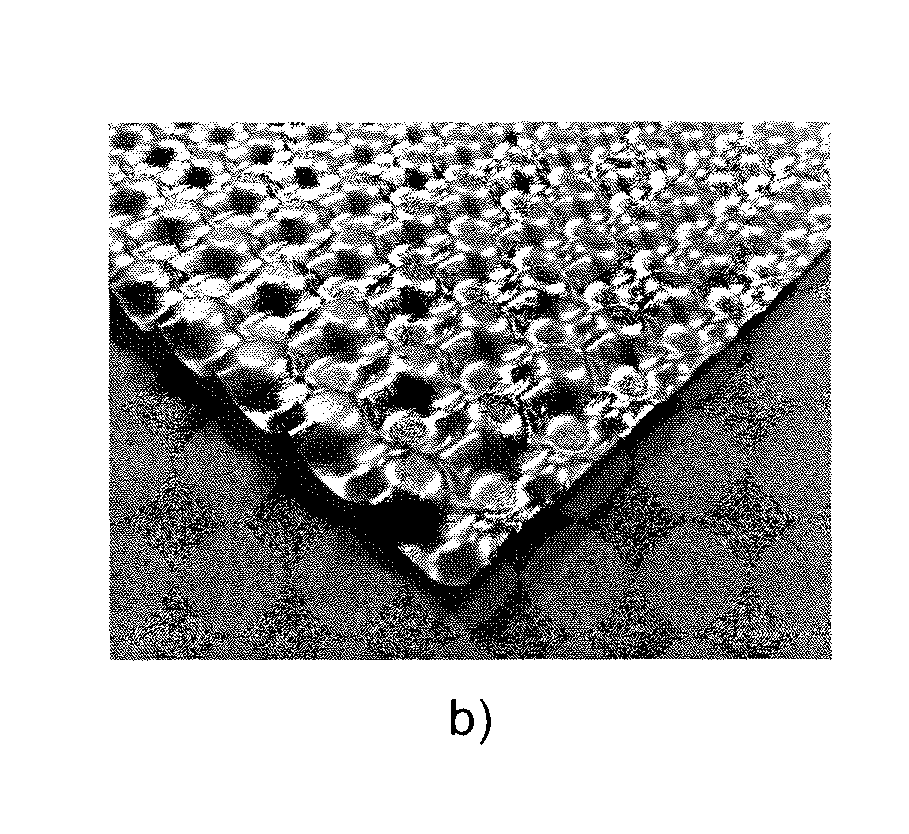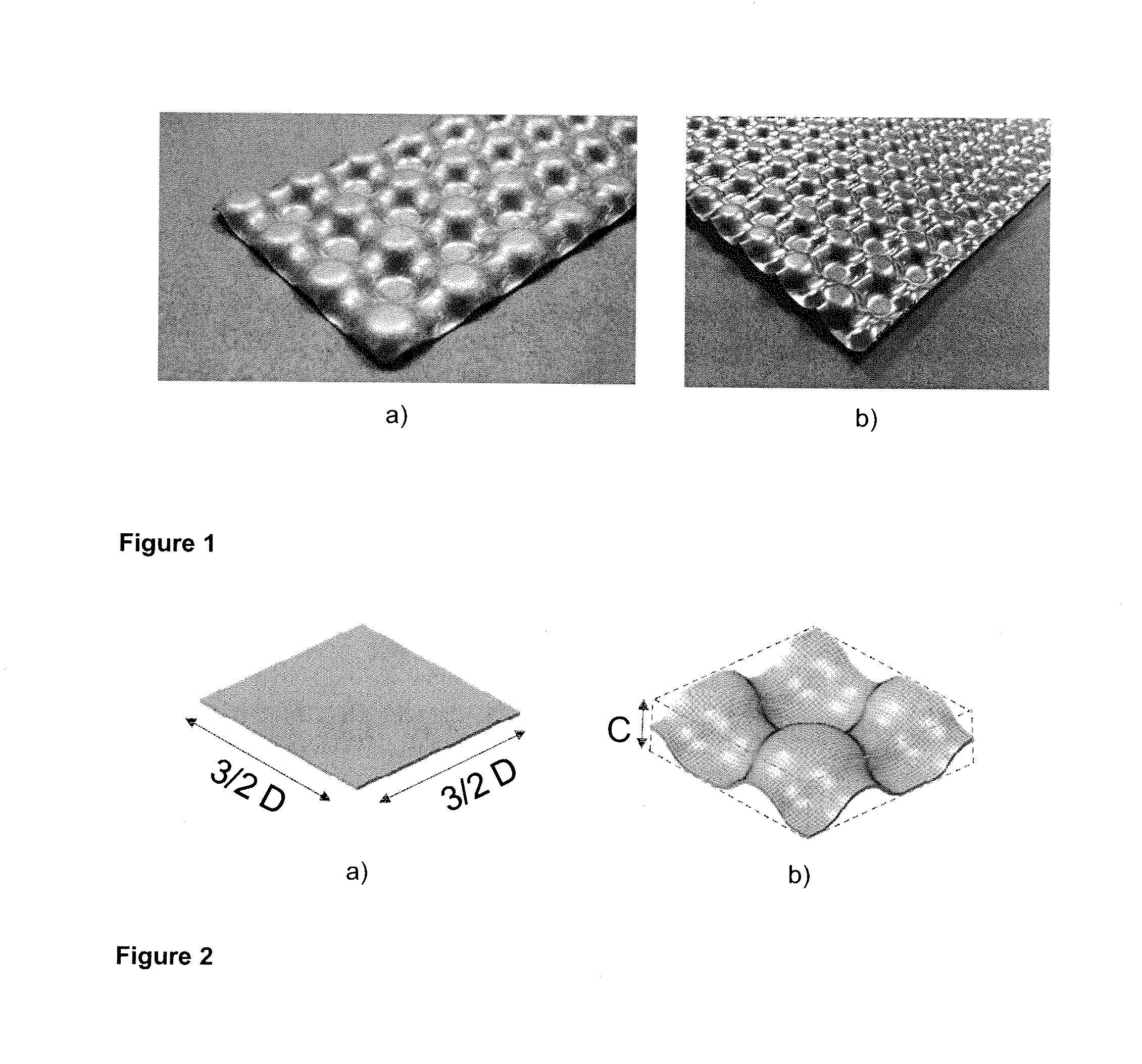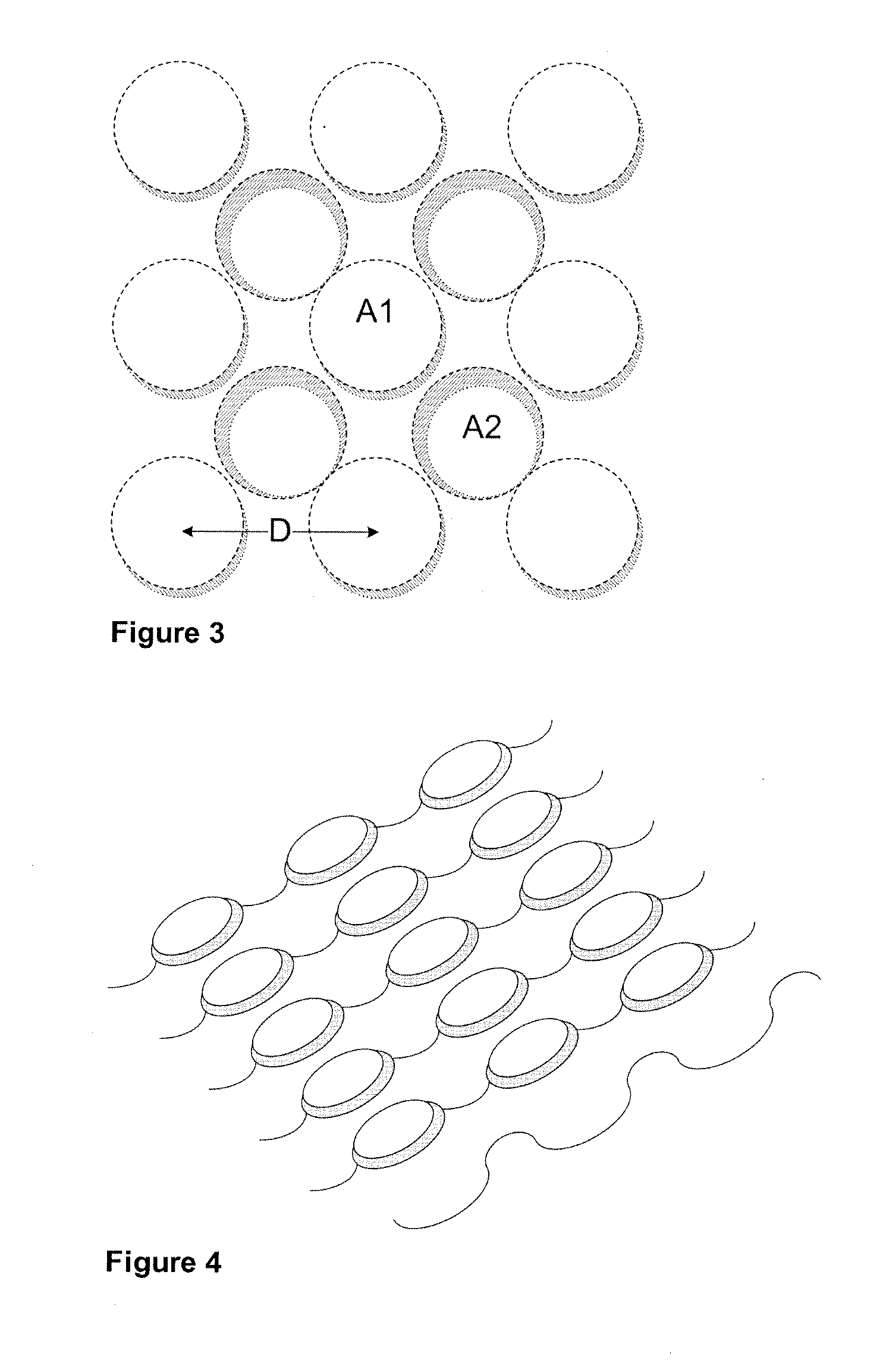Optimal sandwich core structures and forming tools for the mass production of sandwich structures
a sandwich core and sandwich technology, applied in the direction of transportation and packaging, printing, chemistry apparatus and processes, etc., can solve the problems of poor weight specific mechanical performance, inability to manufacture metallic honeycombs in a cost-effective mass production process, and the general inferiority of weight specific mechanical performance of honeycombs
- Summary
- Abstract
- Description
- Claims
- Application Information
AI Technical Summary
Benefits of technology
Problems solved by technology
Method used
Image
Examples
example 1
[0035]FIG. 1 shows a prototype which includes anticlastic core structures which has been made through a) stamping, b) progressive stamping. A 0.008″ thick commercial grade steel has been used as basis material. It is stamped into an anticlastic core layer of a total thickness of a) 4.3 mm and b) 5 mm.
example 2
[0036]A prototype is shown in FIG. 7 where the total thickness of the sandwich panel is 6 mm.
[0037]The basis material of the core and the skins is 0.4 mm thick aluminum.
PUM
| Property | Measurement | Unit |
|---|---|---|
| thickness | aaaaa | aaaaa |
| thickness | aaaaa | aaaaa |
| thickness | aaaaa | aaaaa |
Abstract
Description
Claims
Application Information
 Login to View More
Login to View More - R&D
- Intellectual Property
- Life Sciences
- Materials
- Tech Scout
- Unparalleled Data Quality
- Higher Quality Content
- 60% Fewer Hallucinations
Browse by: Latest US Patents, China's latest patents, Technical Efficacy Thesaurus, Application Domain, Technology Topic, Popular Technical Reports.
© 2025 PatSnap. All rights reserved.Legal|Privacy policy|Modern Slavery Act Transparency Statement|Sitemap|About US| Contact US: help@patsnap.com



